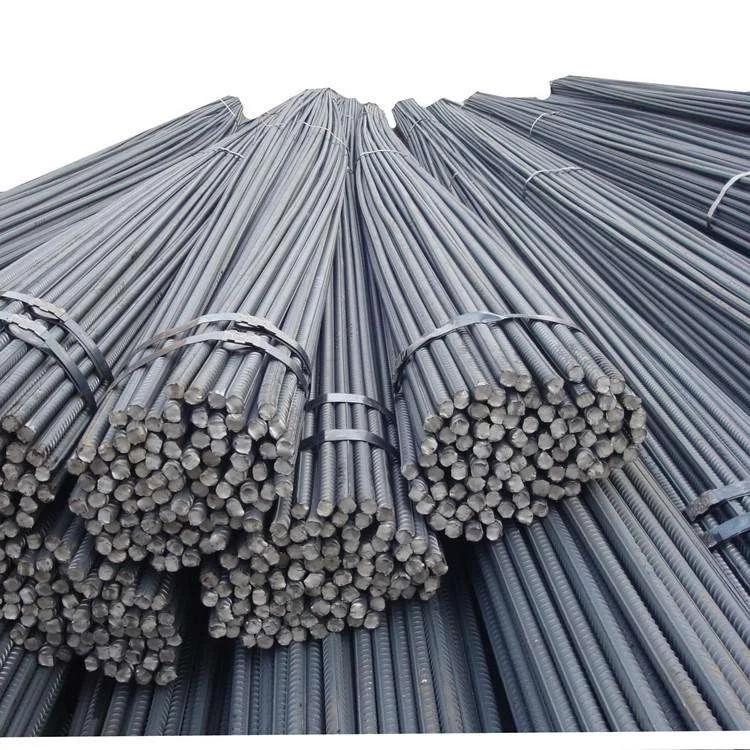Understanding Rebar and Its Place in Building Work
What Rebar Is and Why It Matters
Rebar, sometimes called reinforcing bar or steel reinforcement, is a steel rod that gives concrete extra strength when it’s pulled or stretched. Concrete does a great job handling pressure, like when something presses down on it. But it’s not so good when it’s tugged apart. That’s where rebar comes in—it adds the pulling strength concrete lacks. This combo helps concrete hold up against all kinds of forces without breaking or falling apart. When you stick rebar into concrete, it makes things like houses, bridges, and other builds a lot tougher.
Why Steel Reinforcement Is a Big Deal in Concrete Projects
Steel reinforcement is super important in today’s building world. It makes sure concrete can take on stretching stresses from things like gusty winds, shaky ground, or lots of cars rolling by. Without it, concrete would split open pretty easily. Over time, those splits could wreck the whole structure. On top of that, rebar makes buildings last longer and stay stronger. That’s why it’s a must-have for construction jobs all over the globe.
How Rebar Gets Made
The Stuff That Goes Into Rebar
Steel is the main thing you need to make rebar. A lot of the time, folks use scrap steel that’s been recycled. It’s cheaper and better for the planet. They melt this old steel down in big ovens—either electric arc furnaces or blast furnaces. Once it’s all liquid, they turn it into billets. Those are long, boxy chunks of steel. These chunks are where rebar starts.
Turning Steel Chunks Into Reinforcing Bars
After the billets are ready, they get heated up real hot. Then they go through rolling mills. These machines squish and stretch the steel into long rods. The rods have to be just the right thickness for building needs. After that, they cool off. Workers cut them into the lengths people want. Fancy tricks make sure everything’s spot-on. This helps the rebar meet rules like ASTM A615 or BS 4449.
Adding Bumps to Help It Stick to Concrete
To make rebar grab onto concrete better, they put little ridges or designs on its surface while it’s being made. These bumps keep the steel from slipping around inside the concrete when things get tough. It locks the two together tight.
How Rebar Makes Concrete Stronger
Pairing Concrete’s Push Strength with Steel’s Pull Strength
Concrete’s awesome at taking a squeeze. But it’s weak when you try to yank it apart. Rebar steps up to handle that yanking part. Together, they manage both pushing and pulling forces just fine. This teamwork keeps things steady, even when conditions get rough.
Stopping Cracks and Big Breaks in Concrete Jobs
Rebar cuts down on cracks by spreading out the stress all over the structure. It’s like a backbone holding the concrete in place. Whether the concrete’s stretching, shrinking, or getting pushed by something outside, rebar keeps it together. That way, tiny cracks don’t turn into huge disasters later on.
Why Bumps and Ridges Matter for Rebar
Those ridges or bumps on rebar aren’t just for show. They make the steel grip the concrete tighter. This stops it from sliding or shifting when weight presses down. That solid connection keeps the concrete and steel working as a team to hold everything up.
Tools and Tricks for Working with Rebar
Cutting, Shaping, and Setting Rebar Right
Dealing with rebar takes care and the right know-how to make sure it helps concrete the way it should. For cutting, people use rebar cutters or power saws with rough blades. These cut the steel clean and straight. That’s key so it fits exactly where it’s supposed to in the build.
Shaping rebar means bending it to fit different spots in a project. Workers might use hand tools or big hydraulic benders for this. They push the steel carefully into the angles the plans call for. They don’t want to mess up its strength. Doing it right means the rebar lines up with the design. That boosts its pulling power where it’s needed most.
Setting rebar up involves putting it in the right spots inside the concrete molds. Little spacers or stands hold it steady and keep it spaced out properly. This makes sure it’s buried in the concrete at the perfect depth. Getting this part right helps the whole structure carry weight better.
Staying Safe Around Steel Reinforcement
Working with steel reinforcement can be risky. It’s heavy, and the edges can be sharp. If you’re not careful, you could get hurt. Everyone handling it should wear gear like gloves, safety glasses, hard hats, and boots with steel toes. That stuff protects against cuts, scratches, or bangs while cutting, bending, or setting it up.
When lifting big piles of rebar, use machines like cranes or forklifts. That keeps folks from hurting their backs or straining too hard. Also, keep the work area tidy. Loose steel lying around can trip someone up. Learning the right way to handle it is a must. Sticking to safety steps cuts down on trouble. Doing safety checks and practice runs often helps keep things safe too.
What’s Next for Steel Reinforcement in Building
New Ideas for Rebar Materials and Making It
The building world keeps changing with fresh ideas for materials and how stuff gets made. One cool thing is super-strong steel reinforcement bars. These can handle more pulling force while using less steel. That saves material and makes projects more efficient.
Another neat twist is rebar that doesn’t rust easily. Some are made from stainless steel. Others get coated with stuff like epoxy or zinc. These tricks stop rust and wear from weather or time. That means structures last way longer.
How rebar gets made is getting better too. Machines now do a lot of the work. They make sure every piece comes out just right. Even wilder, folks are trying out 3D printing. That could let them whip up special rebar shapes for certain jobs.
Greener Ways to Use Steel Reinforcement
Going green is a big deal in building these days, and that includes steel reinforcement. Recycling is a huge help here. Most rebar comes from old scrap steel melted down in electric arc furnaces. That takes way less energy than the old ways of making steel.
People are also figuring out how to use less steel without making things weaker. Smart computer programs help builders figure out exactly how much rebar they need. This means less waste. Plus, some factories use wind or solar power to run their machines. That cuts down on pollution from making rebar. Companies like Qingdao Sunrise New Materials Co., Ltd. are all about this green stuff. They make top-notch steel products for the world while keeping the planet in mind.
FAQs
What tools do folks use to cut rebar?
Rebar cutters or saws with rough blades get the job done nice and neat.
How does bending rebar help in building?
Bending lets it fit the shape of the project. It adds pulling strength right where it’s needed.
Why care about safety with steel reinforcement?
Safety keeps workers from getting cut or hurt by heavy, sharp steel while they work.
What new stuff makes rebar better today?
Stronger bars and rust-proof coatings make it work better and last longer.
How does recycling help make steel reinforcement?
It uses less energy and keeps the earth cleaner while making rebar. Qingdao Sunrise New Materials Co., Ltd. backs this up big time.








